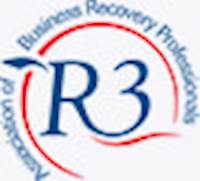Like our own health, business health is a sum of its environment and what’s happening within.
As well as ensuring the business itself is ‘fit’ for purpose, there is a need to be conscious of the market the business sits in, as well as the wider economy. Key performance indicators (or KPIs) are a business health check that can help with such vigilance. Enabling a timely and measured response to internal and external events before they become real issues that may lead to business decline.

There are many KPIs to check fully the breadth of business health but keeping an eye on the well-being of the financial KPI (especially those relating to business cash flow, cited as the leading cause of insolvency) will go a long way to good business performance.
Financial KPI
1. Gross Profit Margin (gross margin)
Gross profit is key to unlocking a profitable business. It shows if your product / service is priced realistically.
Gross profit margin = (revenue – cost of goods / service sold) / revenue
Gross profit margin should cover your fixed (operating) expenses and leave a profit. In looking to increase gross profit margin and so improve profitability, increase sales revenue whilst decreasing the cost to deliver.
2. Net Profit
The cash left after paying all the bills. Often referred to as the ‘bottom line’.
Net profit = total revenue – total expenses
Net profit is something to be accrued for rainy days if possible e.g. seasonal fluctuations. Where this proves difficult, finance may be an option to level the variations
3. Net Profit Margin
The percentage of your revenue that is profit. Your KPI of choice when considering the overall profitability of the business as it considers total sales, subtracts expenses and divides that figure by total revenue.
Net profit margin = net profit / total revenue
4. Cash Balance
Cash flow (the money moving in and out of your business) relates to the company’s ability to pay its bills.
Cash Balance = cash received – cash paid out during a time period
By understanding your cash flow, you are able to make cash flow forecasts; predicting and managing upcoming cash surpluses and cash shortages. And by comparing your actual income and expenses to you cash flow forecast you can even identify under or over business performance.
5. Current Ratio (working capital ratio)
Again, linked to the ability of your business to pay its bills (liabilities), tracking this figure regularly can give advance warning of business cash flow problems and that remedial steps may be needed.
An ideal figure is between 1.5 and 3. If the ratio dips into the 1.5 and 1 range consider it an early warning. A ratio of less than 1 indicates not enough cash coming in to cover the bills.
Current ratio = current assets / current liabilities
6. Quick Ratio (acid-test ratio)
A type of liquidity ratio test useful for businesses that traditionally hold a lot of stock. Quick ratio measures the ability of a company to use near cash or quick assets to pay its current liabilities immediately.
Quick ratio = Current assets less stocks / current liabilities
7. Debt to Equity Ratio
The proportion of equity and debt a company is using to finance its assets and the extent to which shareholder's equity can fulfil creditor obligations in the event of business decline.
Debt to Equity Ratio = Total liabilities / total of shareholders’ equity
8. Days Sales Outstanding
The average number of days that a business takes to collect revenue after a sale. Often a cause of business cash flow problems. A high figure suggests a review of credit control procedures to ensure timely collection.
DSO = Accounts receivable / total credit sales x days in period
Invoice factoring can help to capitalise on outstanding invoices.
A final word of caution, bringing in more cash doesn’t necessarily mean profit maximisation. As you grow, business overheads are likely to grow too. Tend to your margins and ensure you are making maximum money on every sale to ensure financial health.
As licensed insolvency practitioners, if you are worried about you business’ financial health please do contact us 0121 201 1720 for free no obligation business health advice.



